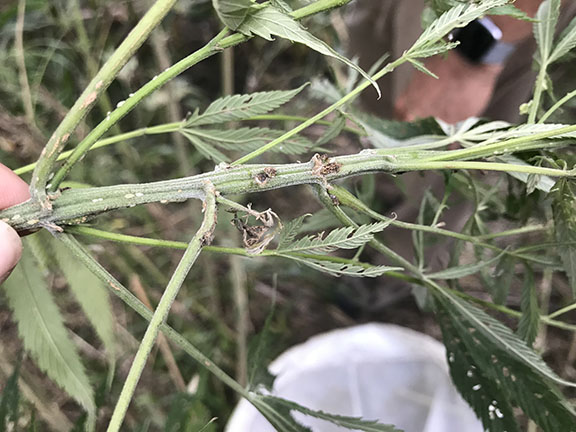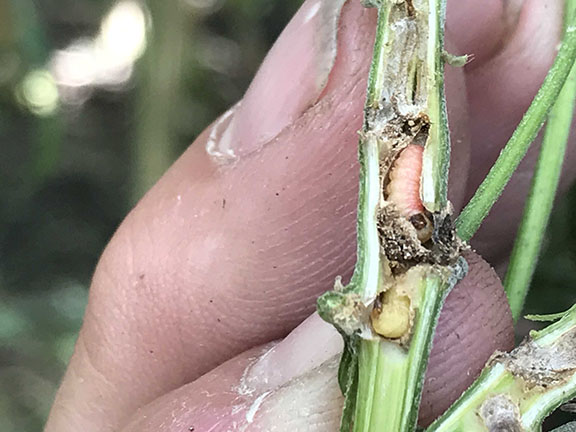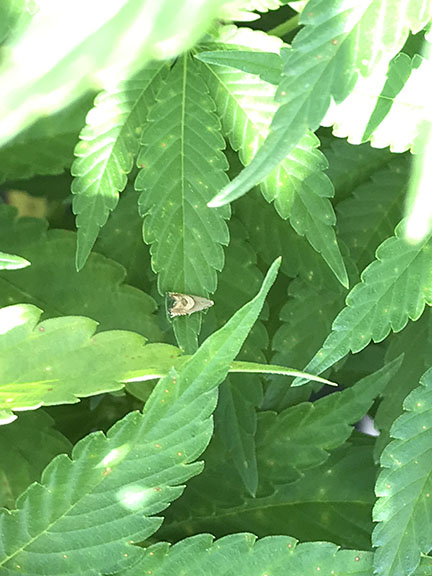As the growing season progresses and hemp farmers gear up for harvest, we are continuing to learn more about pests and pathogens affecting hemp in Indiana. Some of these pests and pathogens have not been previously found in hemp research plots, however, we have naturalized hemp (aka ditchweed) that could give us a better idea of what may attack cultivated hemp across the state. With this in mind, I went out to a population of ditchweed in Jasper county to try and find Eurasian hemp borer (Grapholita delineana), a pest causing economic loss in Colorado. Educators in Wisconsin have positively confirmed Eurasian hemp borer (EHB) in CBD hemp, so I was not surprised to find larvae and pupae in ditchweed (Figure 1). I did not observe any adults in the ditchweed patch, but I did find adults on CBD plants at one of the farms nearby (Figure 2).
EHB is concerning to hemp growers because of its feeding behavior. Larvae bore into the stems and when boring is near the base of developing hemp flowers, direct damage to the flowers can occur. In CBD hemp production, growers are trying to maximize the size of the flowers since the highest concentration of glandular trichomes (which produce the CBD) are found on the female flowers. Growers should be on the look out for adults and for stem and flower damage.
In Colorado, it appears that EHB has three generations (Cranshaw, CSU hemp fact sheets), and the third generation of larvae are causing the most economic damage. I found EHB larvae on August 23rd which also coincides with female flower development for many of the CBD growers in the state, but I have not gotten reports of EHB damage yet. While there are no chemical control options, Cranshaw recommends removing hemp residue from the field after harvest because EHB overwinter as full-grown larvae. He also believes that larvae can use alternate hosts, like hops and knotweed, for overwintering. CBD growers are typically walking their fields to find male plants, they should take additional time to note any damage to the plants.
To learn more about Eurasian Hemp Borer, please see CSU hemp fact sheet https://webdoc.agsci.colostate.edu/hempinsects/PDFs/Eurasian%20hemp%20borer%20September%202018%20rewrite(1).pdf





